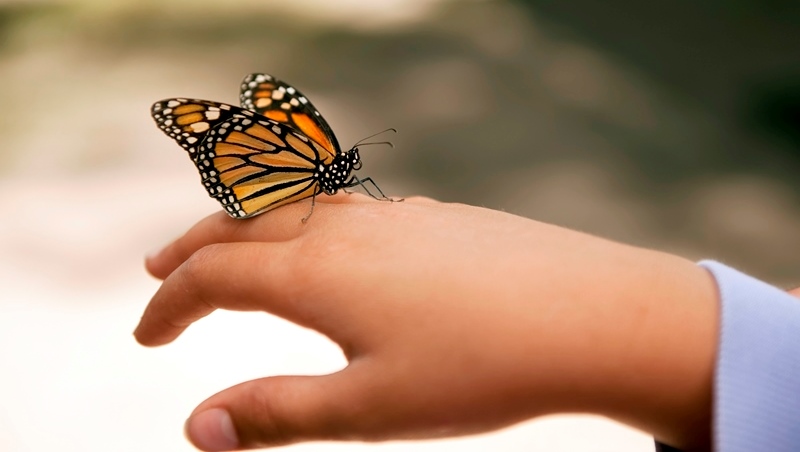Epidermolysis bullosa is a rare, genetic skin disease which affects around 500,000 people worldwide. Young patients are often called ‘butterfly children’ because their skin seems as fragile as butterfly wings. As there is no curative treatment currently, this painful and debilitating condition requires specific daily treatment.

What is epidermolysis bullosa?
In patients with epidermolysis bullosa, large blisters containing a clear fluid appear on the skin. They can usually be found on the feet, hands, and sometimes on the mucous membranes (mouth, genital areas). When they burst, the blisters leave the skin raw, which is then difficult to heal.
There are several forms of epidermolysis bullosa:
– Epidermolysis bullosa simplex, the most common form, where the epidermal skin (most superficial layer of the skin) detaches.
– Junctional epidermolysis bullosa, where the dermis and the epidermis detach.
– Dystrophic epidermolysis bullosa, the least common form, where the dermis (deepest layer) detaches.
In the most severe forms of epidermolysis bullosa (junctional and dystrophic), blisters can appear all over the body. The skin detaching causes one or several wounds (called “erosions”), which form scabs most of the time.
Given the amount of skin surface area that is uncovered, the risk of infection is high. Bacteria can develop and change the appearance of the blisters, which become purulent, weeping and red around the edges.
Causes
Epidermolysis bullosa is a rare hereditary disease. It is caused by issues with certain genes which produce proteins to ensure cohesion between the various layers of the skin. The first symptoms appear from birth or during childhood.
Because the epidermis adheres less effectively to the dermis, a minor impact or very mild friction (clothing, nappy, shoes, gloves etc.) is enough for blisters to form at the surface of the skin. Blisters can also appear spontaneously on the body.
How to treat patients with epidermolysis bullosa?
There is unfortunately no curative treatment for epidermolysis bullosa. Therefore, only general management of symptoms for relieving pain and minimising complications can be offered to the patient.
Carried out daily in a highly aseptic environment (usually in hospital), treatment consists of applying non-adherent dressings and Vaseline where applicable. Covered with a sterile compress held on with a loose bandage and tape, the dressing should not be too tight, to both enable healing and to leave the patient freedom of movement (for the joints especially).
Bandages should then be changed either daily, or every 2 to 3 days during bath time, which is also when any dressing that has stuck can be removed.
In the event of junctional or dystrophic epidermolysis, healing can be delayed and the lesion can develop into a chronic wound which will require specific treatment.
Advice for treatment
The way in which epidermolysis bullosa progresses varies significantly from one patient to another and from one form to another. It’s important to remember that treatment needs vary from patient to patient.
Taking these precautions could help patients, or parents of patients, to better understand the consequences of epidermolysis bullosa on daily life:
- Keep the environment cool, since heat increases the risk of lesions
- Avoid sticking anything on the skin and only use certain types of non-adherent dressings
- Choose a soft mattress and sheets and soft towels. Protect around the patient’s bed to prevent shocks
- Loose seamless cotton clothing with no labels or elastics is preferable
